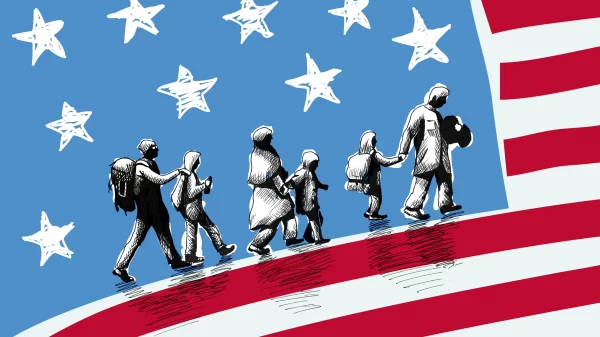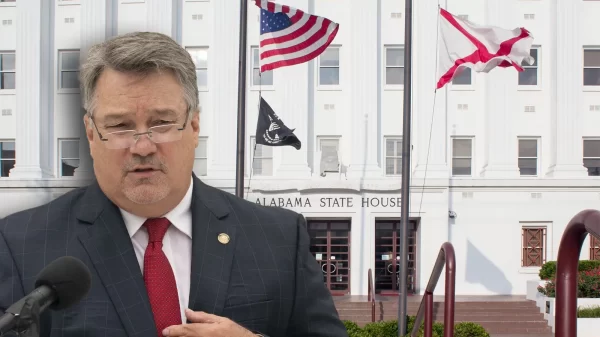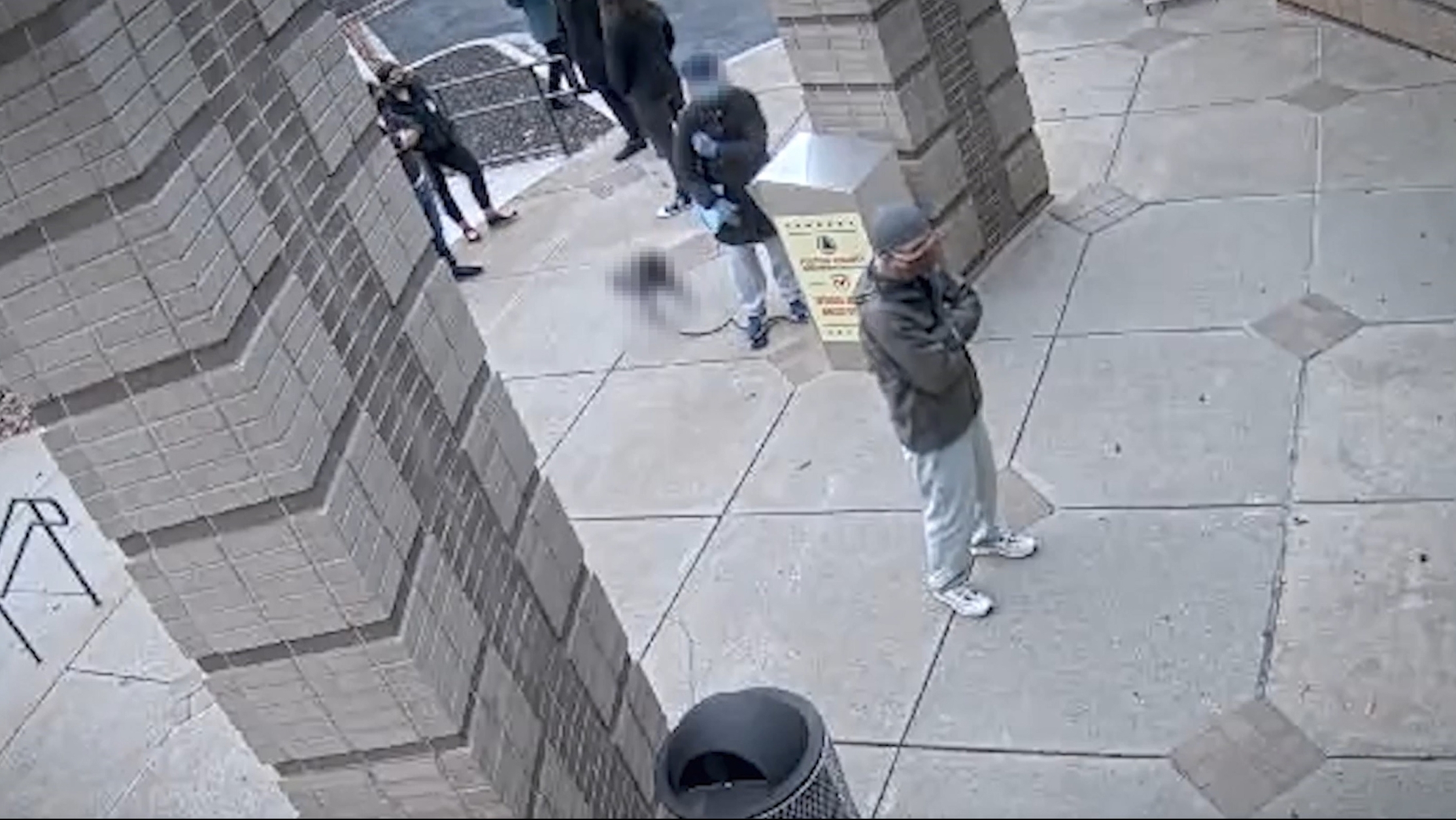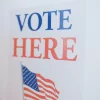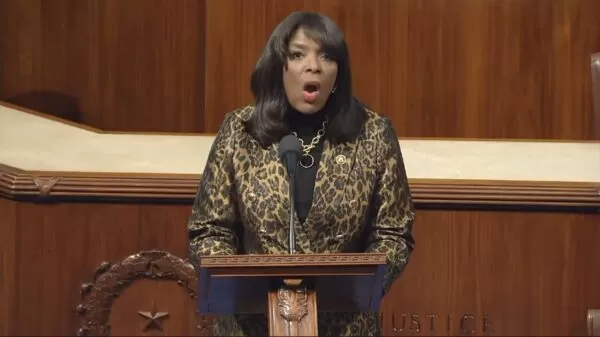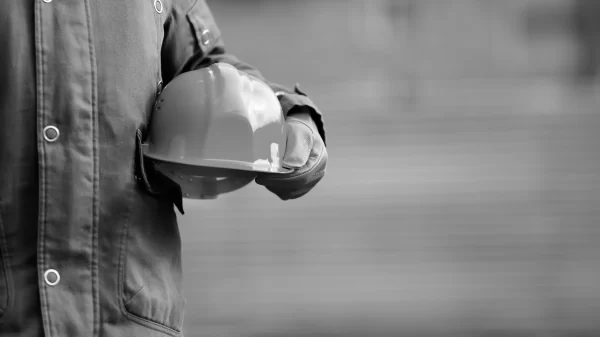In his testimony to the Jan. 6 committee, former Attorney Gen. Bill Barr said he was “unimpressed” by the accusations made in the film “2000 Mules,” an agitprop “documentary” by right-wing commentator Dinesh D’Souza that claims to prove the 2020 presidential election was illegally stolen in a national ballot trafficking scam.
If Barr was unmoved, I was bored.
For a movie arguing that the current American government is illegitimate and in place only due to a criminal conspiracy, it’s a plodding, ramshackle thing content to give more screen time to D’Souza, his wife and a host of fellow commentators and political hangers-on (Sebastian Gorka, Charlie Kirk, Dennis Prager, et. al.) rather than truly explore the film’s explosive accusations. What time that is spent on the “evidence” is devoted to focusing on cell phone data from Atlanta, Phoenix and other cities that “shows” the same individuals (labeled as “mules” by D’Souza and his partners at True the Vote) visited multiple ballot drop boxes.
The claim, then, is that these mules deposited harvested or otherwise illegal ballots into these boxes. Repeatedly. But in just the right numbers to avoid suspicion. Those sneaky, sneaky election thieves.
Thankfully, experts have thoroughly debunked the claims, as did Barr himself. “[I]f you take 2 million cell phones and — and figure out where they are physically in a big city like Atlanta or wherever,” Barr said, “just by definition you’re going to find many hundreds of them have passed by and spent time in the vicinity of these boxes.”
“2000 Mules,” therefore, is DOA as any serious piece of persuasive media. Rather, it stacks up quite nicely next to D’Souza’s other films such as “2016: Obama’s America” and “Hillary’s America: The Secret History of the Democratic Party” as canonical entries in an echo chamber for those already fully onboard the fact-free Trump train.
Yet that doesn’t mean the film is without at least some interesting moments – or rather, an interesting moment. It comes at about the 42-minute mark as D’Souza, his wife and the public faces of True the Vote – Catherine Engelbrecht and Gregg Phillips – are going over the supposed evidence supporting the ballot trafficking scheme. At this point, the foursome haveaugmented the bogus geolocation data claims with actual security camera footage of ballot drop boxes and polling places, and Phillips points to one alleged mule in particular, “Dog Guy,” as he narrates a video taken outside of an Atlanta-area polling place and drop box:
“So, Dog Guy, middle of the day, this is actually at a polling place, so the people in line are waiting to go in and vote early;they’re doing it the right way. OK, now, you’ve got some other people who are going to walk up, this lady doesn’t care, but this guy, this next guy cares. He’s watching the whole thing. Now he’s gonna—he looks up, talks to him—”
Engelbrecht interjects: “He’s got the ballots under his arm already, now he’s got the rest that he pulled out of the bag.”
Phillips then continues, “And he’s going to get his camera ready to take the pictures as he puts them in there. If you consider the brazenness of this, right, this is the middle of the day. There’speople sitting there watching you cheat. People that are doing it the right way.”
(The film claims without evidence that the procedure for mules included taking pictures of ballots in order to be paid for them, excluding all more reasonable explanations, like say, people sharing pictures of their participation in democracy on social media.)
Engelbrecht again interrupts, this time somberly: “They wonder: What does this all even mean if this is happening in broad daylight and nobody is doing anything to stop it?”
Filmmaker D’Souza concludes the examination of the Dog Guy video, explaining the plight of those watching the alleged fraud.
“But it’s difficult for them to know what to do,” D’Souza said, “except observe and maybe say, ‘What’s going on here? What did I just see?’”
This one-minute scene would fit snugly into the rest of the film’s inane nonsense but for one strange thing: Dog Guy’s dog was digitally blurred. The dog. Sure, Dog Guy and other supposed “mules” are obscured in the film as well, but isn’t it odd to fudge away Fido?
To my eye, the dog is blurred for one reason only and that’s to shield D’Souza and True the Vote from a possible defamation claim, the sort of lawsuit we’ve already seen arising from bogus 2020 election claims and right-wing conspiracy mongering more generally. If the editing is truly a move to avoid possible legal trouble, it evidences a lack of faith in the film’s central premise and perhaps broadcasts a clear signal as to the true purpose of “2000 Mules.”
To explore Dog Guy’s possible legal claim, let’s examine three questions: asking whether the scene is defamatory, what a plaintiff must show in terms of identification for a defamation lawsuit and whether the blurring would prevent a successful suit.
1. Is the Dog Guy scene defamatory?
Generally put, defamation is an untrue statement of fact with the capacity to lower one’s standing in the community – basically a legal protection against reputational harm that comes in two flavors: libel (communication that’s printed, broadcast or otherwise set down in a permanent form) and slander (spoken words). A false allegation of crime is classically a central area of concern in defamation, such as in a 2002 Alabama Supreme Court case in which the court upheld a $300,000 verdict for a Clarke County insurance salesman accused by a former manager of “pocketing” money from the sale of policies.
And in 1957, the Alabama Supreme Court explained that in defamation, “words are to be taken in their natural meaning, and according to the sense in which they appear to have been used and the idea they are adapted to convey to those who read them.”
In the Dog Guy scene, we have the presentation of some type of wrongdoing, even if D’Souza, Phillips and Engelbrecht never specify exactly what law the pooch lover is breaking. The innocent act of voting is framed as something nefarious, as a thing that bystanders should somehow. If believed,** it’s the sort of thing that could stigmatize Dog Guy in the community – the very sort of thing defamation law is designed to guard against.
** One possible defense for D’Souza is that no reasonable person can take the claims made in “2000 Mules” seriously. Although that’s not an argument I see him making.
2. What does a plaintiff have to show in terms of identification for a defamation lawsuit?
As one of the elements of the claim, defamation plaintiffs mustshow the material in question was “of and concerning” them. Normally, that’s not an issue since plaintiffs are generally identified by name or something close to it, as was the case when Paul Finebaum was sued for defamation after a 1998 broadcast that mentioned another radio personality by name.
But plaintiffs can also prove identification when mentioned by position, description or both. For example, this tweet likely identifies for the purposes of a hypothetical defamation lawsuit Scott Cochran, an ex-longtime strength and conditioning coach at Alabama and likewise a former redhead:
aS ThE yeaRs gO by Its Deinitely obviouS what the ginger coach gives them RT @AaronSuttles: Kouandjio Was in better shape while at Alabama.
— DyeHardAU (@DyeHardAU) February 22, 2014
Situations and other circumstances can also help a plaintiff prove the defamation was “of and concerning” them. In 1980, a Pennsylvania state appellate court found that a newspaper story singling out a student’s “regular classroom teacher” met the identification requirement when some readers would reasonably know the name of the defendant’s son’s teacher or could easily find out the information. Likewise in 1984, a federal district court in Pennsylvania held that a libel plaintiff was sufficiently identified in a broadcast in which the name of the small college she attended was given in addition to the make of her car and where she was before she was sexually assaulted. And the same court 10 years later found an attorney identified where his law firm was small, firings were infrequent and media coverage gave additional details.
“One need not have a doctorate in cryptography to be able to look through the various exhibits, such as plaintiff’s resume and publications, as well as [the law firm’s] roster, to crack this little conundrum,” the court concluded.
Let’s assume Dog Guy’s face was blurred, but the dog wasn’t. That would give viewers a few specific facts, including that Dog Guy lived in the Atlanta area, voted using a ballot drop box and had a pet that was at least somewhat distinct. It would be at least a plausible argument that the defamation in the scene was “of and concerning” them – especially when considering the legal standard is whether *any* viewer could have identified them, not *every* viewer.
3. Does the blurring in the scene prevent a successful suit?
Probably? Or at least it takes away one of the biggest assets Dog Guy would have in making their case, Without the details of the dog, again, we know where Dog Guy generally lives (not a great help, since it’s home to some 6 million people), they have *a* pet and they voted using a drop box, which would make them one of at least 305,000 voters in the area to do so.
With the blurring in place for both the Dog Guy and their friend, we don’t know much other than those facts – viewers get a little taste of Dog Guy’s hair (A ponytail? A bun, maybe?) but I wouldn’t be ready to even draw a conclusion as to their expressed gender.
Therefore, a plausible case for identification becomes more or less lost, which is why the decision to obscure the dog feels like such a transparent move to lessen legal exposure.
And why exactly would D’Souza be worried about a lawsuit? IfI as a journalist made a movie and included video evidence of someone participating in a national conspiracy to steal an election, I would stand by my work, and let the criminals be exposed to the light of the truth.
But if I was making a movie for a hopelessly deluded audience that would buy any shoddy thing I might be pushing? A movie that was only designed to add a few zeroes to my bank account and gin up social media outrage? A movie I didn’t actually believe in?
Well…that just might change my calculus.












